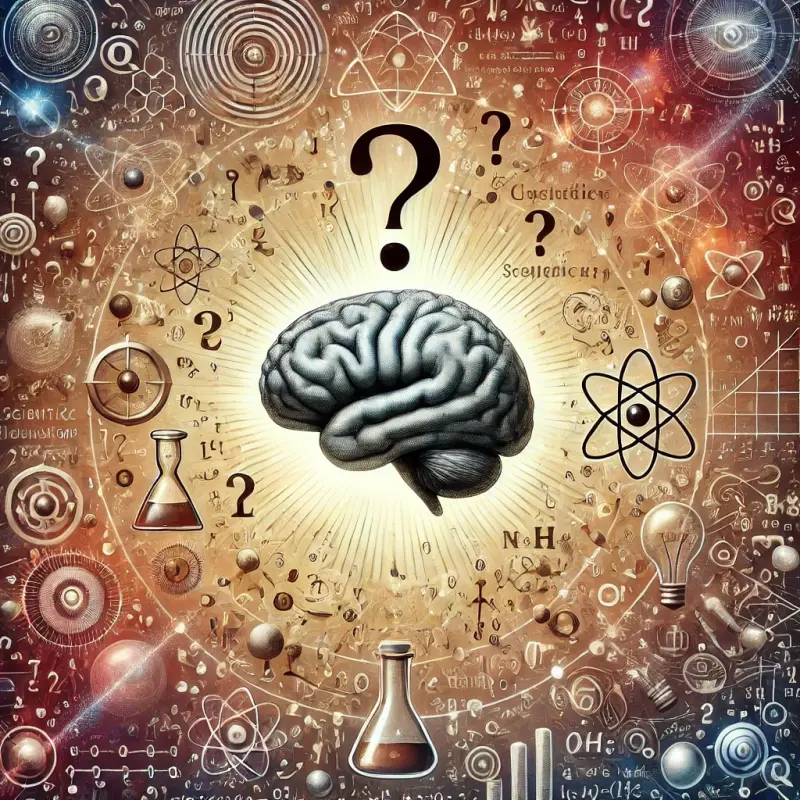Introduction to Critical Thinking and Scientific Myths
Critical thinking is one of the most valuable skills you can develop, especially in today's world, where information is constantly being thrown at us from all directions. The ability to analyze, question, and evaluate the validity of the information we encounter is essential for making informed decisions and avoiding false conclusions. A highly effective way to sharpen your critical thinking is by dissecting and debunking scientific myths. These myths, often spread by misinformation or misunderstandings of scientific principles, provide a perfect arena for practicing your analytical and reasoning skills.
In this article, we will explore the importance of critical thinking, introduce several common scientific myths, and suggest exercises to help you develop these skills through their analysis. By the end of this guide, you will have a deeper understanding of how critical thinking works and how you can apply it to various areas of life, especially when faced with seemingly plausible but ultimately false information.
What is Critical Thinking?
Critical thinking refers to the process of actively analyzing, interpreting, and evaluating information in a systematic and objective way. It involves questioning assumptions, examining evidence, and considering alternative perspectives before coming to a conclusion. Critical thinkers are not swayed by popular opinion or emotional appeals. Instead, they rely on logic, reason, and well-supported facts to form their opinions.
In essence, critical thinking is about thinking more deeply and more effectively. It requires you to look beyond surface-level information and investigate the underlying principles, sources, and evidence behind what you hear, read, or see.
Developing critical thinking skills is crucial in a world where misinformation, pseudoscience, and exaggerated claims abound. Learning to separate fact from fiction can help you make better decisions, solve problems more effectively, and engage more meaningfully in discussions about complex topics.
Why Scientific Myths Are a Great Tool for Building Critical Thinking
Scientific myths are often rooted in misunderstandings or oversimplifications of scientific concepts. These myths can be appealing because they often sound plausible or are repeated by people in positions of authority, such as influencers, media outlets, or even experts. However, when you examine them more closely, they usually break down under scrutiny.
By actively engaging with scientific myths, you challenge your own assumptions and develop a mindset that seeks to question, explore, and verify information before accepting it as truth. This process directly builds your critical thinking muscles.
Let’s look at some of the most common scientific myths that provide perfect opportunities for critical analysis:
Example 1: "We Only Use 10% of Our Brain"
This is one of the most well-known scientific myths. It suggests that humans only use a small fraction (about 10%) of their brains, implying that there is vast untapped potential waiting to be unlocked. However, this claim is false. Neuroimaging studies have shown that almost all parts of the brain have identifiable functions, and even seemingly "inactive" areas are engaged in various tasks, including supporting basic bodily functions, processing emotions, and enabling cognitive functions like memory and learning.
Exercise: Analyze the 10% Brain Myth
-
Source Evaluation: Look into where the claim originated. Who first suggested that we only use 10% of our brains, and why did it become so widespread?
-
Evidence Analysis: Research neuroimaging technologies and studies that contradict this myth. What evidence exists to show that we use more than 10% of our brains?
-
Alternative Explanations: What are some reasons why this myth might have persisted despite being disproven? Consider the role of popular media, books, and even well-meaning educators.
-
Conclusion: What can we conclude about the nature of our brain's potential when we take a critical look at this myth? What does this tell us about how we should approach similar claims?
This exercise encourages you to question a widely accepted idea and evaluate the evidence critically.
Example 2: "Sharks Are Heartless Killers"
Another common myth is that sharks are mindless, ruthless killers that attack humans out of malice. While sharks can be dangerous, they do not hunt humans intentionally. In fact, sharks generally avoid human contact and attacks are often cases of mistaken identity, where the shark mistakes a swimmer for its natural prey. Moreover, the majority of shark species are not dangerous to humans at all.
Exercise: Evaluate the Shark Myth
-
Myth Deconstruction: Break down the myth by examining the language used to describe sharks in the media. How does the portrayal of sharks as "killers" influence public perception?
-
Scientific Research: Find studies or reports that explain shark behavior. How do scientists categorize shark attacks, and what do they suggest is the real cause behind most attacks?
-
Consider the Context: Why do myths like this persist? Is it because of movies, news stories, or sensational headlines?
-
Reframe the Myth: How can we communicate the true nature of sharks to the public without sensationalizing or demonizing them? What role does critical thinking play in reshaping this narrative?
By critically evaluating such myths, we can better understand how media shapes our perceptions and how we can approach topics with a more balanced perspective.
